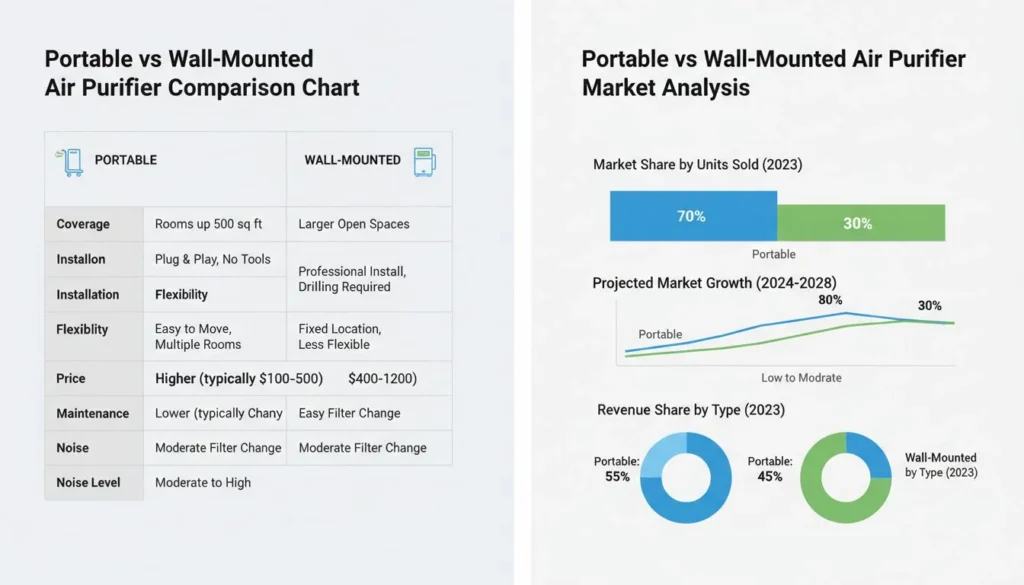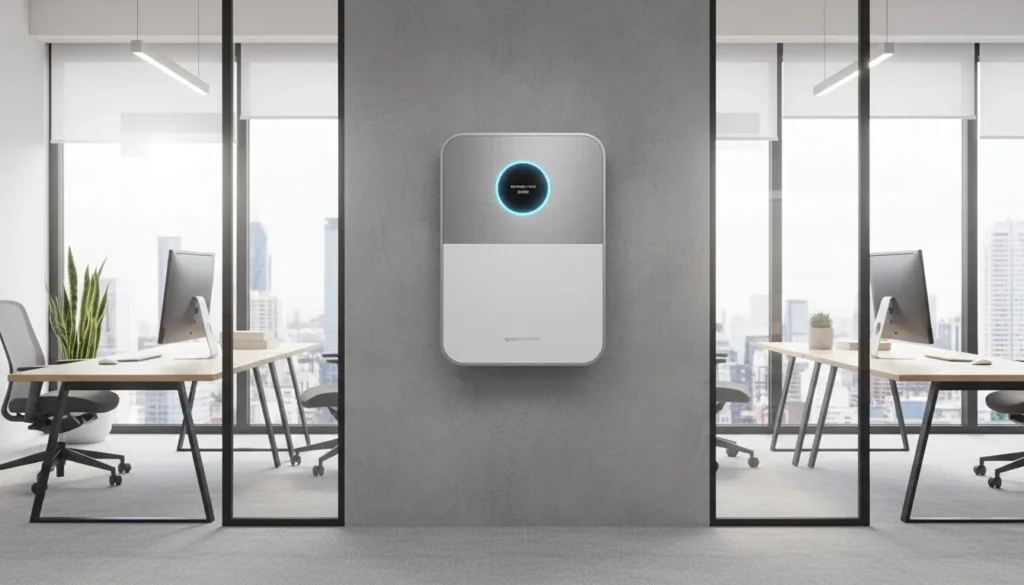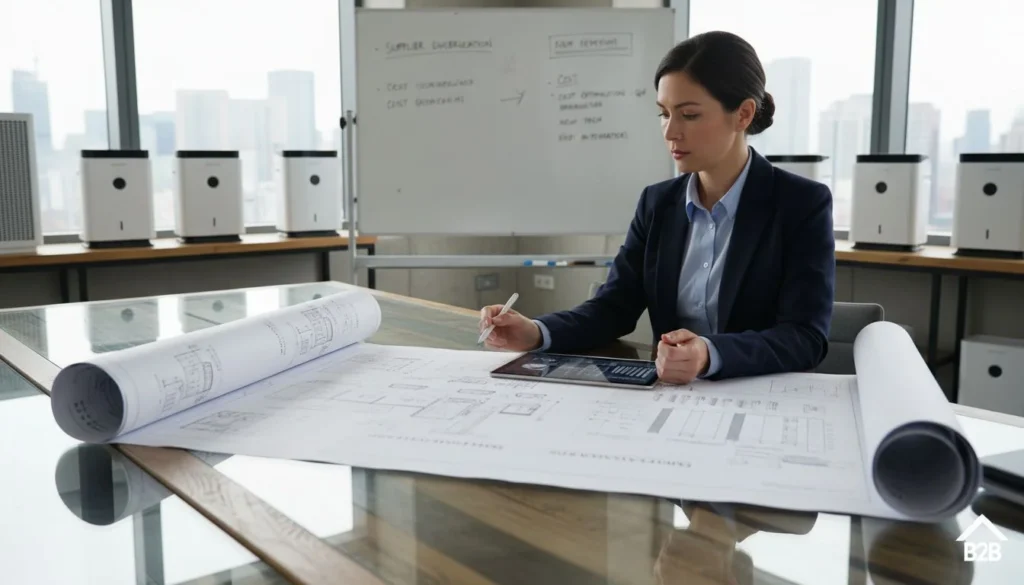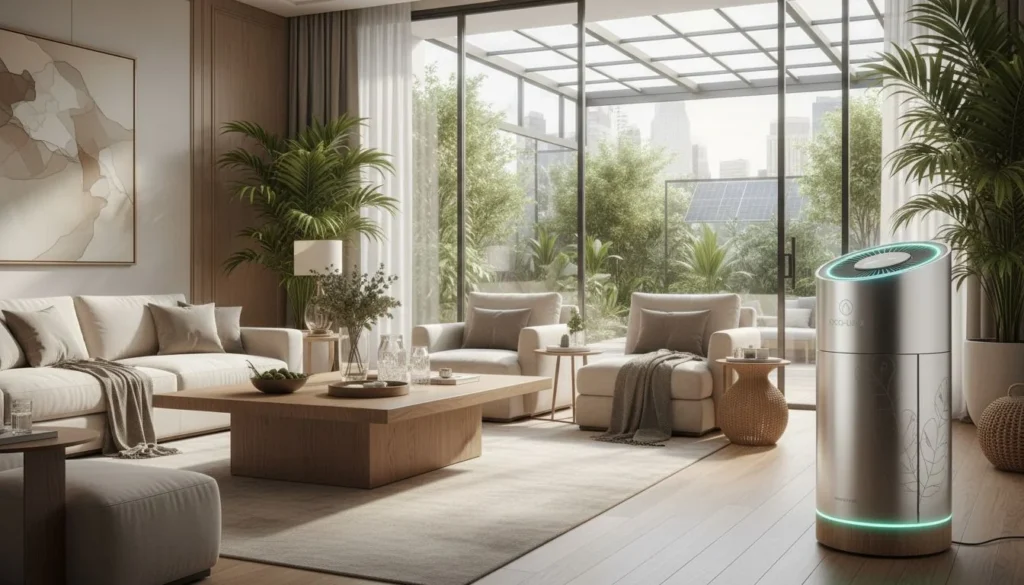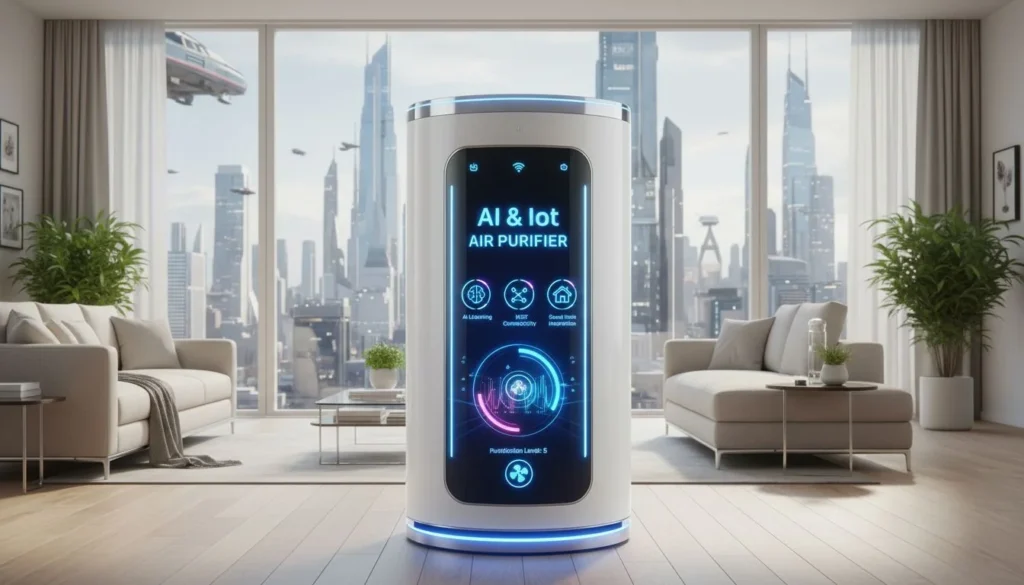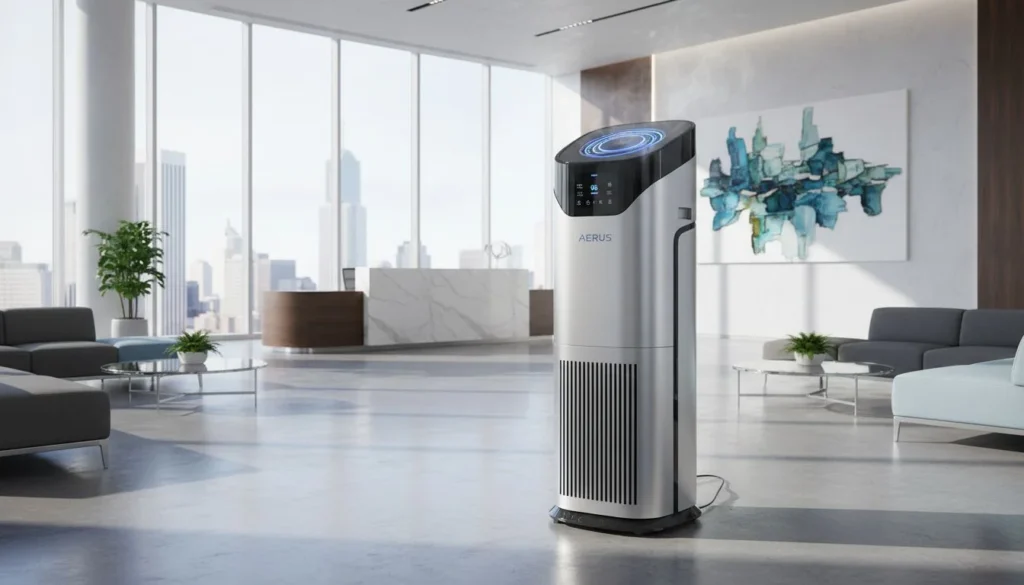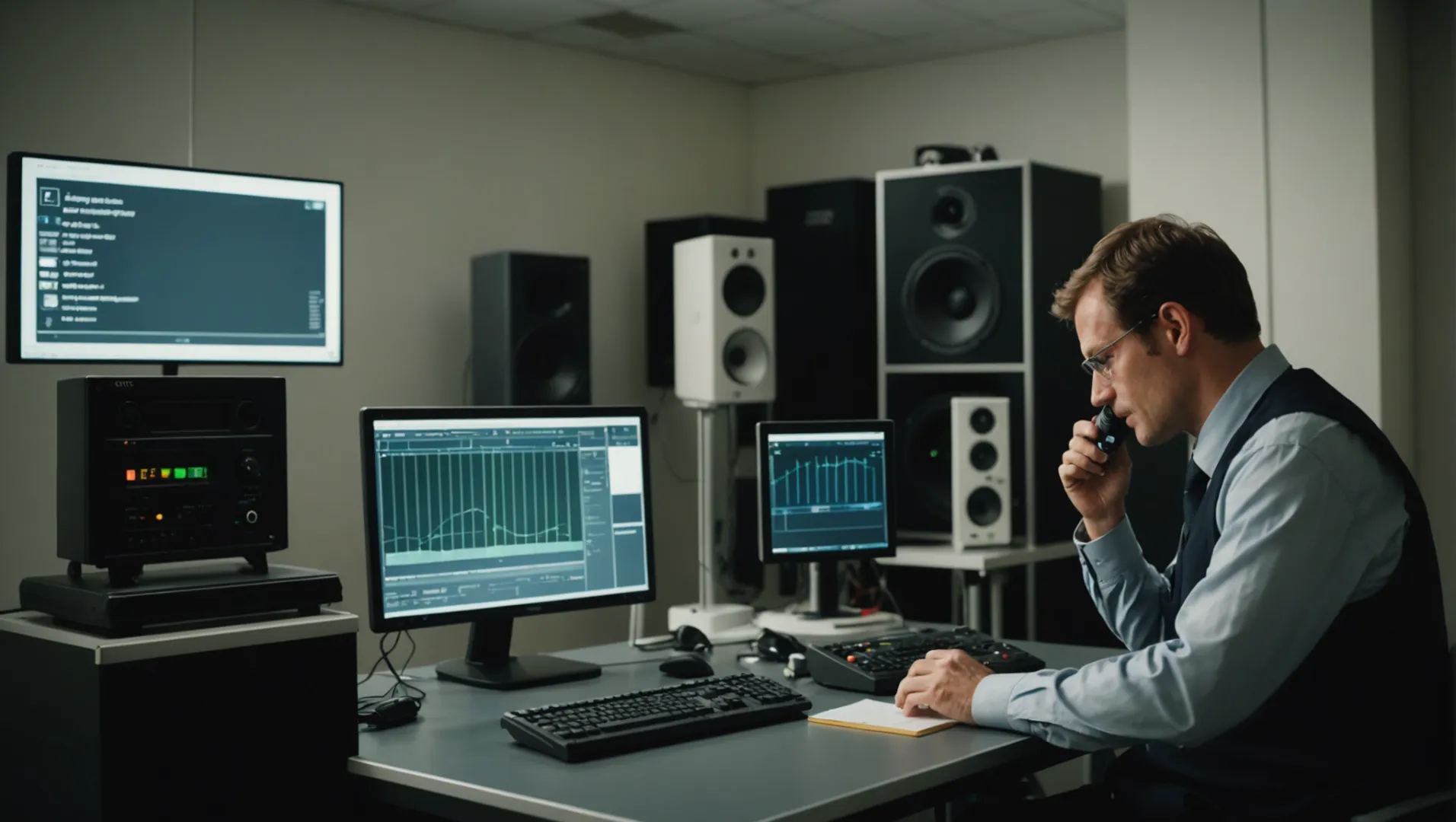
평온을 방해하는 시끄러운 가전제품에 지치셨나요? 공기청정기 소음 테스트에 대해 함께 알아보세요!
공기청정기의 소음 수준을 효과적으로 테스트하려면 환경 간섭을 피하고 음압과 음력 측정을 구분할 수 있는 전문 소음 테스트실을 이용하세요. 정확한 결과를 얻으려면 공기청정기의 성능에 맞춰 테스트해야 합니다.
이 단편적인 내용은 기본적인 이해를 제공하지만, 소음 테스트의 복잡성은 방대합니다. 자세한 가이드를 자세히 살펴보고 전문적인 테스트 환경, 측정 기술, 최적의 공기청정기 기능을 위해 성능과 소음 수준의 균형을 맞추는 방법에 대해 알아보세요.
음량은 환경에 관계없이 일정하게 유지됩니다.True
음력은 주변 환경의 영향을 받지 않고 방출되는 총 에너지를 측정합니다.
소음 테스트에는 어떤 도구와 장비가 필요하나요?
공기청정기의 소음 테스트를 시작하기 전에 올바른 도구와 장비를 갖추는 것이 중요합니다.
소음 테스트를 위한 필수 도구에는 소음 측정기, 소음 선량계, 캘리브레이터, 무반향실 등이 있습니다. 이러한 기기는 공기청정기 성능을 평가하는 데 필수적인 음압과 음력을 정밀하게 측정하는 데 도움이 됩니다.
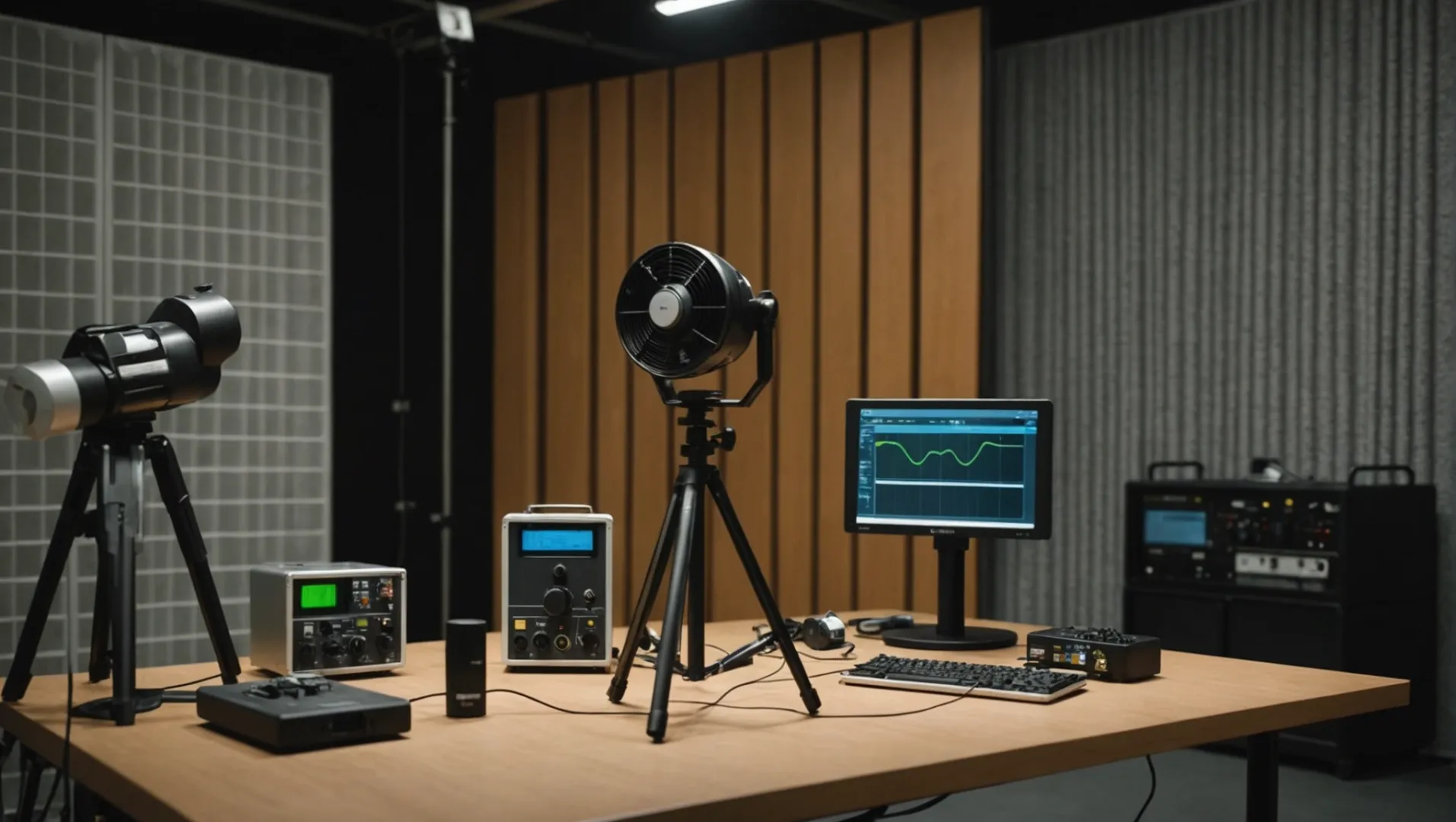
노이즈 측정의 기본 이해
정확하게 소음 수준 테스트1 공기청정기에는 몇 가지 특수 도구가 필요합니다. 다음은 필수 장비에 대한 분석입니다:
- 사운드 레벨 미터: 소리의 강도를 데시벨(dB) 단위로 측정하는 데 사용됩니다. 공기 청정기에서 발생하는 즉각적인 소음 수준을 이해하는 데 중요합니다.
- 소음 선량계: 소음 측정기와 유사하지만, 평균 소음 노출을 평가하기 위해 장기간에 걸쳐 사용하는 장치입니다. 소음 수준이 변동하는 환경에서 특히 유용합니다.
- 캘리브레이터: 정확성을 보장하려면 사운드 측정기를 보정해야 합니다. 캘리브레이터는 기준 톤을 제공하므로 이에 따라 소음 측정기를 조정할 수 있습니다.
- 무반향 챔버: 소리의 반사를 흡수하는 특수 설계된 공간입니다. 외부 소음 간섭을 제거하여 보다 정확한 테스트를 위한 제어된 환경을 제공합니다.
음압 대 음력
소음을 측정할 때는 음압과 음력을 구분하는 것이 중요합니다:
- 음압 는 우리가 듣는 소리이며 소음 측정기를 사용하여 측정합니다. 음파에 의해 발생하는 국부적인 압력 변화입니다.
- 사운드 파워는 단위 시간당 소스가 방출하는 에너지로, 소스가 소리를 생성하는 능력을 보다 본질적으로 측정하는 척도입니다. 이는 정밀도를 위해 산업 환경에서 자주 사용됩니다.
실제로, 사운드 파워 측정2 공기청정기의 완전한 사운드 프로파일을 파악하려면 무반향실 및 다중 지점 테스트와 같은 보다 정교한 설정이 필요합니다.
표준 테스트 절차
소음 테스트는 결과의 일관성과 비교 가능성을 보장하기 위해 표준화된 절차를 준수해야 합니다. 공기 청정기의 경우:
- 9포인트 테스트: 여기에는 일반적으로 1미터 거리에서 공기청정기 주변의 다양한 각도와 거리에서 측정하는 것이 포함됩니다. 이 방법은 전체 소음 방출 프로파일을 캡처하는 데 도움이 됩니다.
- 표준 준수: 테스트를 위한 구체적인 프로토콜을 제공하는 미국 시장용 AHAM과 같은 기관의 가이드라인을 활용하세요.
이러한 도구와 방법을 이해하면 측정의 정밀도를 높일 수 있을 뿐만 아니라 더 조용하고 효율적인 공기청정기를 설계하는 데 도움이 됩니다.
사운드 레벨 미터는 데시벨 단위로 사운드 강도를 측정합니다.True
사운드 레벨 미터는 데시벨(dB) 단위로 사운드 강도를 측정하도록 설계되었습니다.
무반향 챔버는 정확한 테스트를 위해 외부 소음을 증폭합니다.False
무반향 챔버는 소리의 반사를 흡수하여 외부 소음 간섭을 제거합니다.
음압과 음력은 측정에서 어떻게 다른가요?
정확한 소음 레벨 테스트를 위해서는 음압과 사운드 파워의 차이를 이해하는 것이 중요합니다.
음압은 음파에 의한 기압의 국부적 변화를 측정하는 반면, 음력은 소스가 방출하는 총 에너지를 정량화합니다. 음압 레벨은 거리와 환경에 따라 변동될 수 있지만 음력은 일정하게 유지되므로 여러 소스를 비교할 때 보다 안정적인 기준을 제공합니다.

음압: 청각적 경험
음압은 우리가 어떤 소리가 얼마나 크게 들리는지 이야기할 때 자주 언급하는 개념입니다. 음압은 특정 지점에서 기압의 변동을 측정하며 일반적으로 데시벨(dB)로 표시됩니다. 음압의 음압 레벨3 (SPL)는 소스와의 거리와 소리를 반사하거나 흡수할 수 있는 벽이나 물체와 같은 환경 조건의 영향을 받습니다. 이러한 가변성은 실제 청취 환경을 반영하기 때문에 소비자용 제품에 실용적인 측정값이 됩니다.
사운드 파워: 소스의 시그니처
반면에 사운드 파워는 소스가 방출하는 소리 에너지의 총량을 와트 단위로 측정한 것입니다. 음압과 달리 사운드 파워는 주변 환경이나 소스와의 거리에 관계없이 일정하게 유지됩니다. 이러한 일관성 덕분에 소음 방출을 정밀하게 제어하는 것이 중요한 산업 분야에 유용한 측정 기준이 됩니다.
측정 차이의 실제적 의미
공기청정기와 같은 소비자 시장에서는 사용자 경험과의 관련성 때문에 음압 측정이 자주 사용됩니다. 하지만 소음 수준이 낮은 고성능 공기청정기를 설계하려면 다음 사항을 이해해야 합니다. 사운드 파워 측정4 는 필수입니다. 예를 들어, 사운드 출력을 줄이면 방 안의 위치에 따라 음압 레벨이 달라지더라도 전체적으로 더 조용한 장치를 만들 수 있습니다.
| 측정 유형 | 단위 | 영향력 | 애플리케이션 |
|---|---|---|---|
| 음압 | dB | 거리, 환경 | 소비자 제품 |
| 사운드 파워 | 와트 | 없음 | 산업 디자인 |
올바른 측정값 선택
음압과 사운드 파워 중에서 선택하는 것은 애플리케이션의 목적에 따라 다릅니다. 사용자에게 조용한 환경을 제공하는 것이 목표라면 다음 사항에 중점을 두어야 합니다. 음압 레벨5 가 유리합니다. 반대로 일관된 출력이 필요한 엔지니어링 목적의 경우 사운드 파워가 더 신뢰할 수 있는 벤치마크를 제공합니다.
음량은 데시벨(dB) 단위로 측정됩니다.False
음력은 데시벨이 아닌 와트 단위로 측정됩니다.
음압 레벨은 소스와의 거리에 따라 달라집니다.True
거리는 음압 레벨에 영향을 미쳐 소리가 얼마나 크게 들리는지에 변화를 줍니다.
전문 소음 테스트실이 중요한 이유는 무엇인가요?
정확한 공기청정기 평가를 위해 전문 소음 테스트실이 중요한 이유를 알아보세요.
전문 소음 테스트 룸은 환경 소음 간섭을 최소화하여 공기청정기 소음 수준을 정확하고 신뢰할 수 있게 측정합니다.
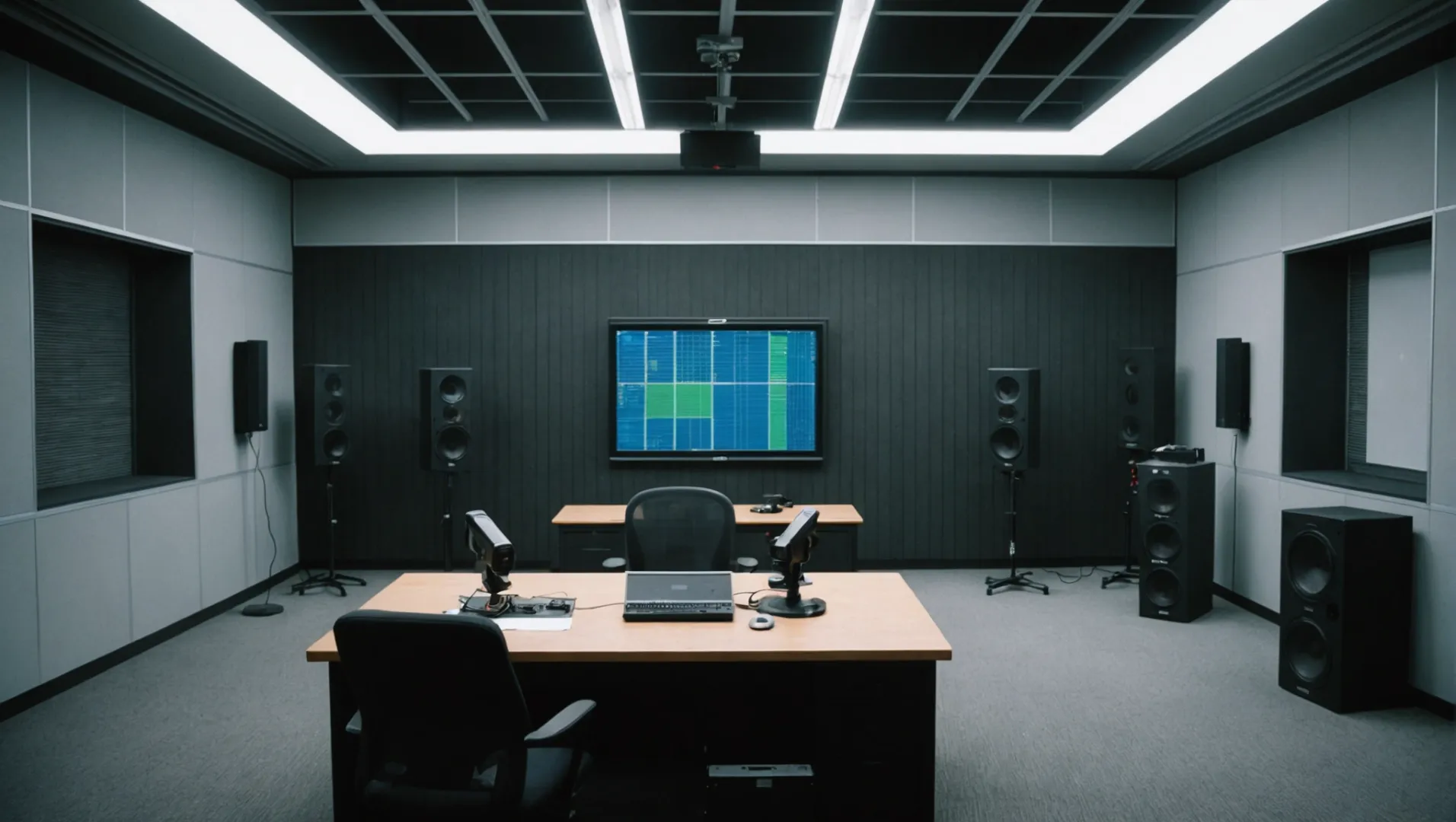
정확한 측정 보장
공기청정기의 소음 수준을 측정할 때 정확하고 일관된 결과를 얻으려면 전문 소음 테스트실이 필수적입니다. 이러한 통제된 환경이 없으면 외부 소음으로 인해 수치가 쉽게 왜곡되어 공기청정기의 성능을 제대로 반영하지 못하는 부정확한 평가로 이어질 수 있습니다. 특수한 공간에서 장치를 격리함으로써 테스터는 공기청정기 자체에서 발생하는 소리에만 집중할 수 있습니다.
음압과 음력의 구분
소음 테스트 영역에서는 음압과 사운드 파워를 구분하는 것이 중요합니다. 소비자 시장에서 자주 사용되는 음압은 특정 지점에서 들리는 소리 수준을 나타내며 환경에 따라 달라질 수 있습니다. 반대로 사운드 파워는 디바이스에서 방출되는 총 음향 에너지를 정량화하여 상업적 환경에서 선호되는 보다 정확한 측정 기준을 제공합니다.
전문 소음 테스트 룸은 외부 영향으로부터 자유로운 안정적인 환경을 제공하여 음압과 음력을 모두 정확하게 측정할 수 있습니다. 소음을 최소화한 고성능 공기청정기를 설계할 때 이러한 정확성은 특히 중요합니다.
성능과 노이즈 레벨의 균형 맞추기
공기청정기는 효율적인 작동과 허용 가능한 소음 수준 사이의 균형을 유지해야 합니다. 전문 테스트 환경을 통해 제조업체는 다음과 같은 기술을 사용하여 이 균형을 엄격하게 평가할 수 있습니다. 멀티포인트 테스트6. 여기에는 일반적으로 1미터 거리에서 전면, 후면, 측면, 상단 등 기기 주변의 다양한 각도에서 측정하는 것이 포함됩니다. 이러한 종합적인 테스트를 통해 정수기의 성능에 영향을 주지 않으면서 소음 수준을 제어할 수 있습니다.
산업 표준 및 규정 준수
업계 표준을 준수하는 것도 전문 소음 테스트실이 필수적인 또 다른 이유입니다. AHAM(미국 가전제품 제조업체 협회)의 표준과 같은 표준은 제품 전반의 일관성을 보장하기 위한 테스트 절차를 안내합니다. 이러한 표준은 측정 방법과 장소를 명시하고 있으므로 제조업체는 이러한 엄격한 요구 사항을 충족할 수 있는 시설에 접근하는 것이 필수적입니다.
요약하자면, 전문 소음 테스트실은 단순히 낮은 데시벨을 달성하는 것이 아니라 공기청정기가 최상의 성능을 제공하면서 허용 가능한 소음 수준을 통해 사용자의 편안함을 유지하도록 보장하는 것입니다. 소비자들이 조용한 작동과 효율적인 공기 정화를 모두 요구하는 오늘날의 경쟁이 치열한 시장에서는 이러한 균형이 매우 중요합니다.
전문 소음 테스트 룸은 외부 소음 간섭을 줄여줍니다.True
환경 소음을 최소화하여 정밀한 측정을 보장하도록 설계되었습니다.
소음 테스트에서 음압과 음력은 동일합니다.False
음압은 환경에 따라 다르며, 음력은 총 음향 에너지를 측정합니다.
공기청정기의 성능과 소음의 균형을 어떻게 맞출 수 있을까요?
공기청정기의 성능과 소음의 균형을 맞추는 것은 방해 없이 최적의 기능을 발휘하는 데 매우 중요합니다.
공기청정기의 성능과 소음의 균형을 맞추려면 음력 측정을 통해 소음 수준을 테스트하고, 팬 속도를 고려하고, 더 조용한 작동을 위한 첨단 기술을 사용하세요.

성능과 노이즈의 트레이드 오프 이해하기
공기청정기는 필터를 통해 공기를 순환시켜 오염 물질을 제거하는 방식으로 작동합니다. 이 과정의 효과는 팬 속도와 사용되는 여과 시스템의 유형에 따라 크게 달라집니다. 일반적으로 팬 속도가 높을수록 공기 정화 성능은 향상되지만 소음 수준도 높아집니다. 따라서 균형을 맞추려면 전략적인 조정이 필요합니다.
팬 속도와 기술의 역할
제조업체는 종종 가변 속도 제어 기능을 통합하여 사용자가 필요에 따라 팬 속도를 조절할 수 있도록 합니다. 고성능 설정은 오염이 심한 시간대에는 적합할 수 있지만 소음이 심할 수 있습니다. 반대로 조용한 작동을 선호하는 야간 사용에는 낮은 설정으로 충분할 수 있습니다.
최근 기술 발전으로 성능 저하 없이 소음을 적게 발생시키는 더 효율적인 팬과 모터가 개발되었습니다. 다음과 같은 기술 HEPA 필터 시스템7 활성탄 필터는 공기 정화를 극대화하는 동시에 소음을 최소화하도록 설계되었습니다.
소음 제어를 위한 사운드 파워 측정 활용
사운드 파워 레벨 측정은 특히 상업 및 산업 환경에서 음압 레벨보다 일반적으로 더 정확합니다. 이 접근 방식은 사람의 귀로 감지되는 소리가 아닌 정화기 자체에서 방출되는 소리를 평가하는 것으로, 환경 요인에 따라 달라질 수 있습니다.
종합적인 소음 테스트에는 일반적으로 1m의 표준 거리에서 공기청정기 주변의 여러 지점(전면, 후면, 측면, 상단)에서 측정하는 것이 포함됩니다. 이를 통해 다양한 작동 모드에서 소음 프로필을 보다 명확하게 파악할 수 있습니다.
| 측정 유형 | 설명 | 애플리케이션 |
|---|---|---|
| 사운드 파워 | 방출되는 총 음향 에너지 | 설계 및 엔지니어링에 선호 |
| 음압 | 사람이 인지하는 소음 수준 | 소비자 평가에서 공통적으로 나타나는 사항 |
디자인 혁신 구현
단열 케이스, 흡음재, 공기역학 팬 블레이드와 같은 디자인 기능을 통합하면 소음을 더욱 줄일 수 있습니다. 일부 고급 모델에는 공기질에 따라 팬 속도를 자동으로 조절하는 스마트 센서가 탑재되어 있어 성능과 조용한 작동 사이의 균형을 유지합니다.
이러한 요소에 집중함으로써 제조업체는 고성능 표준과 저소음 기대치를 모두 충족하는 공기청정기를 개발하여 소비자에게 두 가지 장점을 모두 제공할 수 있습니다.
팬 속도가 높을수록 공기 청정기 소음이 증가합니다.True
팬 속도를 높이면 공기 청정 효과가 향상되지만 소음 수준이 높아집니다.
HEPA 필터는 공기청정기의 소음을 줄여줍니다.False
HEPA 필터는 정화를 개선하지만 소음을 직접적으로 줄이지는 못합니다.
결론
소음 테스트를 이해하면 효율성과 평온함의 균형을 유지하면서 완벽한 공기청정기를 찾을 수 있습니다.
-
정확한 소음 테스트에 필수적인 종합적인 도구 목록을 확인하세요: 공기청정기에서 발생하는 소음 수준을 평가하는 것은 매우 중요합니다. 우리는 전문 도구를 사용하여 dBA 척도로 소음 수준을 측정하고 각 공기 청정기를 테스트합니다 ... ↩
-
음압과 전력의 주요 차이점에 대해 알아보세요: 사운드 파워 레벨의 경우 기준값은 10-12와트인 반면 음압 레벨의 기준값은 2.10-5파스칼입니다. ↩
-
음압 레벨이 청각 경험에 어떤 영향을 미치는지 알아보세요: 음압 레벨(SPL)은 데시벨(dB) 단위로 측정되는 소리의 압력 수준입니다. 이는 루트의 비율의 로그10의 20배에 해당합니다. ↩
-
제품 설계에서 사운드 파워의 중요성 이해..: 산업 소음 공해라고도 하는 산업 소음은 산업 활동 및 공정에서 발생하는 원치 않거나 과도한 소리를 말합니다. ↩
-
SPL이 소비자 인식에 미치는 영향에 대해 알아보세요: 이 PNR 등급은 소비자가 구매하려는 제품의 소음을 더 잘 이해하고 비교하는 데 도움이 됩니다. ↩
-
다점 테스트가 종합적인 소음 수준 평가를 보장하는 이유를 알아보세요: DIY 에어 필터를 테스트하기 위해 같은 음식을 네 번 요리하고 그 중 두 번은 팬을 강하게 틀어 테스트하기로 했습니다. ↩
-
HEPA 시스템이 정화 효율과 소음 감소의 균형을 맞추는 방법을 알아보세요: HEPA는 주름진 기계식 공기 필터의 일종입니다. 고효율 미립자 공기 [필터]의 약자입니다 (미국 에너지 부에서 공식적으로 정의한대로 ... ↩


